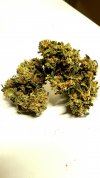Navigation
Install the app
How to install the app on iOS
Follow along with the video below to see how to install our site as a web app on your home screen.
Note: This feature may not be available in some browsers.
More options
Style variation
Guest viewing limit reached
- You have reached the maximum number of guest views allowed
- Please register below to remove this limitation
- Already a member? Click here to login
You are using an out of date browser. It may not display this or other websites correctly.
You should upgrade or use an alternative browser.
You should upgrade or use an alternative browser.
Marijuana [Cannabis]
- Thread starter biggerandbetter
- Start date
[OA] The Association Between Cannabis Use and Testicular Function
Objective: To evaluate the association between cannabis use and testicular function (as assessed through semen quality and serum hormone levels) in different populations.
Evidence review: Systematic review and meta-analysis of population-based retrospective cohort studies. PRISMA guidelines were used for abstracting data and assessing data quality and validity. Data were pooled using a fixed-effect or random-effects model depending on the heterogeneity of studies included. Pooled risk ratio (RR) of having any sperm abnormality and Testosterone, FSH, and LH standardized mean differences among male cannabis users and non-users, and meta-regression analysis according to age, and year of publication.
Results: Nine studies were evaluted which included 4014 men with semen data and 4787 with hormonal data. Overall among 1158 cannabis users, 44.9% had impaired semen parameters. Compared to 24.5% of the 2856 nonusers. The relative risk among cannabis users for any abnormal semen parameter was 1.159 (95%CI: 0.840; 1.599, p=0.369).
The standardized mean difference between users and non-users testosterone levels was -0.139 (95%CI: -0.413; 0.134, p= 0.318). For FSH, the standardized mean difference estimate was -0.142 (95%CI: -0.243; -0.0425, p=0.005), while for LH the standardized mean difference estimate was -0.318 (95%CI: -0.810-0.175; p= 0.206).
Conclusions: The current evidence does not suggest clinically significant associations between cannabis use and testicular function. However, we cannot exclude an effect of cannabis due to the limited and heterogeneous studies. Additional, well-designed studies will be needed to define the association between cannabis use and the male reproductive system.
Belladelli F, Del Giudice F, Kasman A, Jensen TK, Jørgensen N, Salonia A, Eisenberg ML. The association between cannabis use and testicular function in men: a systematic review and meta-analysis. Andrology. 2020 Nov 29. doi: 10.1111/andr.12953. Epub ahead of print. PMID: 33251770. https://onlinelibrary.wiley.com/doi/10.1111/andr.12953
Objective: To evaluate the association between cannabis use and testicular function (as assessed through semen quality and serum hormone levels) in different populations.
Evidence review: Systematic review and meta-analysis of population-based retrospective cohort studies. PRISMA guidelines were used for abstracting data and assessing data quality and validity. Data were pooled using a fixed-effect or random-effects model depending on the heterogeneity of studies included. Pooled risk ratio (RR) of having any sperm abnormality and Testosterone, FSH, and LH standardized mean differences among male cannabis users and non-users, and meta-regression analysis according to age, and year of publication.
Results: Nine studies were evaluted which included 4014 men with semen data and 4787 with hormonal data. Overall among 1158 cannabis users, 44.9% had impaired semen parameters. Compared to 24.5% of the 2856 nonusers. The relative risk among cannabis users for any abnormal semen parameter was 1.159 (95%CI: 0.840; 1.599, p=0.369).
The standardized mean difference between users and non-users testosterone levels was -0.139 (95%CI: -0.413; 0.134, p= 0.318). For FSH, the standardized mean difference estimate was -0.142 (95%CI: -0.243; -0.0425, p=0.005), while for LH the standardized mean difference estimate was -0.318 (95%CI: -0.810-0.175; p= 0.206).
Conclusions: The current evidence does not suggest clinically significant associations between cannabis use and testicular function. However, we cannot exclude an effect of cannabis due to the limited and heterogeneous studies. Additional, well-designed studies will be needed to define the association between cannabis use and the male reproductive system.
Belladelli F, Del Giudice F, Kasman A, Jensen TK, Jørgensen N, Salonia A, Eisenberg ML. The association between cannabis use and testicular function in men: a systematic review and meta-analysis. Andrology. 2020 Nov 29. doi: 10.1111/andr.12953. Epub ahead of print. PMID: 33251770. https://onlinelibrary.wiley.com/doi/10.1111/andr.12953
John Fetterman, a Democrat, is the lieutenant governor of Pennsylvania.
Decades ago, our country outlawed a plant. This plant, then as now, has never resulted in a single overdose death. Since the plant is an outlaw, you’ll be branded one if you’re unlucky enough to get arrested for casually consuming it.
What a profoundly odd and destructive national fixation — one that seems more like superstition than rational argument.
So how do you convince a nation that something that could easily and benignly grow next to your prized tomatoes is a weed from hell coming for your children?
That was the work of “Reefer Madness,” the 1930s anti-weed propaganda paid for by a church group that wanted to scare anyone who ever thought of smoking a joint. I highly recommend giving it a fresh watch. Look at the imagery. Take in the propaganda. Realize that there was an orchestrated effort to criminalize it in a way that would be hilarious if not so sinister and destructive.
It needs to be said: Just legalize it already.
anonymous_475692
Member
if you’re a athlete, i am gonna assume there are a lot more benefits to eating marijuana (gummies etc) compared to smoking it
so what kind of benefits do you think a athlete could gain from eating cannabis ?
so what kind of benefits do you think a athlete could gain from eating cannabis ?
GohomeOrLift
Banned

A whole lot of people are working out high during COVID-19
Results show that, in general, THC users consume cannabis before or during their workouts, while CBD users seem to consume after exercising.
Similar threads
- Replies
- 5
- Views
- 106
- Replies
- 215
- Views
- 7K
- Replies
- 10
- Views
- 1K




